How to Conduct a Social Media Competitive Analysis (Free Template)
Social media is a competitive space. 90% of brands are now using it to build awareness.
So how can you stay ahead of the competition and win?
Start with a social media competitive analysis.
Learn how you stack up against others in your industry, and discover new opportunities and potential threats.
This guide will teach you how to conduct your own, but first…
Bonus: Get a free, customizable competitive analysis template to easily size up the competition and identify opportunities for your brand to pull ahead.
What is competitive analysis?
A competitive analysis is an analysis of your competition to find out what their strengths and weaknesses are, and how those strengths and weaknesses compare to your own.
It’s a process of benchmarking your own results against the heavy-hitters in your industry, so you can identify opportunities for growth as well as strategies that aren’t performing as well as they should.
A social media competitive analysis, specifically, will help you:
- Identify who your competitors are on social media
- Know which social platforms they’re on
- Know how they’re using those platforms
- Understand how well their social strategy is working
- Benchmark your social results against the competition
- Identify social threats to your business
- Find gaps in your own social media strategy
How to conduct a competitive analysis on social media in 4 simple steps
We’ve broken the process of conducting a competitive analysis on social media into four steps that will work for any brand.
Before your start, download the free social media competitive analysis template included at the beginning and end of this article to keep track of your efforts.
Step 1. Determine who your competitors are
Identify your competitive keywords
You probably already know some of the keywords your business is trying to rank for in the search engines. For example, if you work for a Manhattan-based hotel, you’re likely focused on keyword such as “New York hotels,” and “best places to stay in Manhattan.”
But if your property is a boutique hotel with evening wine tastings and local art, you’re not necessarily competing directly with the Holiday Inn. Having a thorough understanding of your keyword inventory will help you develop a clear picture of who you’re really competing against online.
The Google Adwords Keyword Planner is a great place to identify the keywords most relevant to your brand. Even if you don’t advertise with Google Adwords, this tool is free to use.
To start, use the tool to analyze your website. You’ll get a list of relevant keywords, along with the average monthly searches and estimated level of competition.
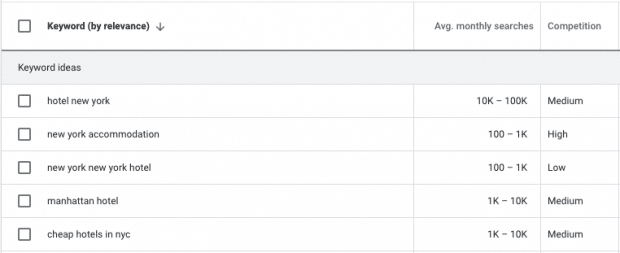
Or, you can enter your known target keywords into the tool. Again, you’ll get a list of related keywords with data on search volume and competition. Use these related keywords to help you narrow your definition of your competitors, so you can make sure you’re analyzing businesses that are truly competing with your own.
Check who’s ranking for those keywords in Google
Choose the top five or 10 keywords that have the most relevance to your business, and plug them into Google. You’ll soon get a sense of who your top competition is online.
Pay special attention to the brands that are paying for Google ads to get their names above the organic search results, as they’re putting their money where their marketing ambitions are. Even if they don’t have great organic search rankings (yet), it’s worth checking out how they’re performing on social media.
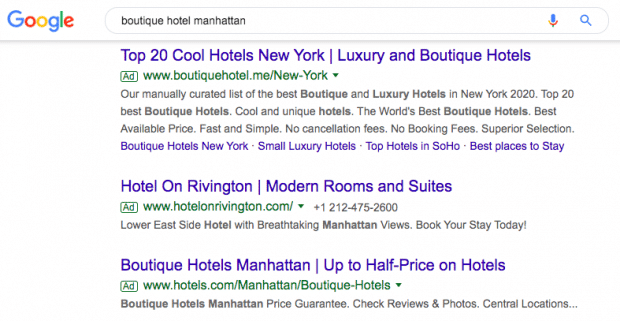
Click through to the websites of any brands that appear to be potential competitors. Most businesses link to their social channels in the header or the footer of their website. Enter the links to their social profiles in your competitive analysis spreadsheet.
Check who appears in social searches for those keywords
The brands that rank for your keywords in Google are not necessarily the same ones that rank well within the social networks themselves. Since this is a social media competitive analysis, you need to see who comes up tops in social search results, too.
For example, head to Facebook and enter your keyword in the search box. Then click on Pages in the top menu.
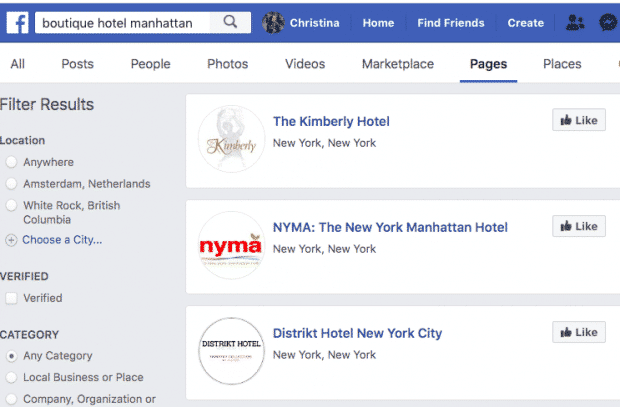
For more tips on searching the various social networks, check out our post on the best ways to research online.
Find out what similar brands your audience follows
Facebook Audience Insights and Twitter Analytics can give you some good insights into which other brands your audience follows on these social networks. If these brands are similar to yours, it’s worth considering them as potential competitors.
To find which brands your audience follows on Facebook:
- Open Facebook Audience Insights
- Use the left column to enter the demographics of your target audience OR scroll down to Pages in the left column and enter your existing Facebook Page under People Connected to
- In the top menu, click Page Likes
Want to dive deeper? We’ve got a whole post with more tips on how to use Facebook Audience insights for customer research.

You may find that none of the Pages identified are relevant to your industry, but if they are, add them to your competitors list.
On Twitter, rather than checking on your whole audience, you can check to see who your top followers are connected to.
- Open Twitter Analytics.
- Scroll down to each of your Top Followers for the last several months
- Click View profile for each Top Follower
- Click Following on their profile to see the full list of accounts they’re following, or click Tweets & replies to see which accounts they interact with
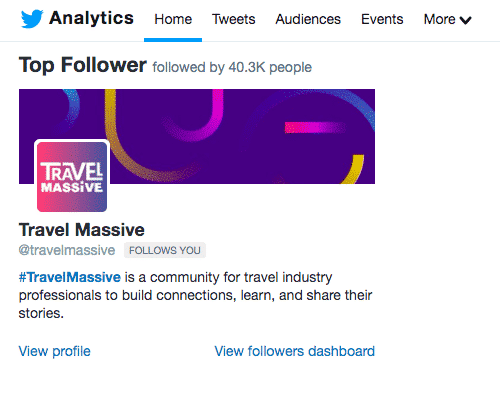
Choose up to 5 competitors to focus on
By now you’ve got a huge list of potential competitors — far more than you could reasonably include in a thorough competitive analysis. It’s time to narrow down your list to the top three to five brands who you are most closely competing with on social media. Choose the brands that have the closest fit to your target niche.
Bonus: Get a free, customizable competitive analysis template to easily size up the competition and identify opportunities for your brand to pull ahead.
Get the template now!Step 2. Gather intel
Now that you know who your competition is, you need to learn what they’re up to on social media.
Click through to the social networks of each of the brands you’ve identified as top competitors. As mentioned above, you can usually find these links in the header or footer of their website. In your social media competitive analysis template, make note of the following:
- What social networks are they on?
- How large is their following and how fast is it growing?
- Who are their top followers?
- How often do they post?
- What is their engagement rate?
- What is their social share of voice?
- What hashtags do they use most often?
- How many hashtags do they use?
You can find much of this information just by clicking around your competition’s social profiles. For more streamlined data gathering, check out the tools mentioned below.
Don’t forget to track all of these things for your own social channels as well. This will help you with your analysis in the next step.
Step 3. Do a SWOT analysis
Now that you’ve gathered all that data, it’s time to analyze it in a way that helps you understand where you stand compared to the competition. As part of this analysis, you’ll also look for potential ways to improve your strategy, and potential hazards to watch out for along the way.
A SWOT analysis is a great tool to help you think clearly about all of this information. In a SWOT analysis, you take a hard look at your business and the competition to identify:
- S – Strengths
- W – Weaknesses
- O – Opportunities
- T – Threats
The important thing to know is that strengths and weaknesses involve factors internal to your brand. Basically, these are things you’re doing right, and areas where you could stand to improve.
Opportunities and threats are based on external factors: things happening in your competitive environment that you need to be aware of.

Here are some items to list in each quadrant of the SWOT template.
Strengths
List metrics for which your numbers are higher than the competition.
Weaknesses
List metrics for which your numbers are lagging behind the competition. These are areas you’ll want to focus on improving through testing and tweaks to your social media strategy.
Keep in mind that you could have both strengths and weaknesses for each social network. For example, maybe your Facebook follower count is higher than your competitors, but they have better follower growth. Or maybe you have fewer Instagram followers but higher engagement.
Get quite specific here, because these distinctions will help you identify your opportunities and threats.
Opportunities
Now that you can see at a glance where you stand compared to the competition, you can identify potential opportunities to take advantage of.
These opportunities might be areas where you think you could improve compared to your competition based on information you’ve already gathered, or they could be based on anticipated or recent changes in the social media world.
For example, if you pay attention to the Hootsuite Weekly Rundown on Instagram, you’ll know that byte just launched a new video platform that’s essentially a successor to Vine. Considering the strengths and weaknesses you’ve identified, could this present a potential opportunity for your brand to outshine the competition?
Threats
Like opportunities, threats come from outside your organization. To get a keen sense of upcoming threats, take a good look at numbers related to growth, or anything that signifies change over time.
For example, a competitor that is small but has a high follower growth rate might present a bigger threat that a large competitor with stagnant growth.
This is another area where you need to keep an eye on the broader industry for upcoming changes that could affect your position compared to your competitors. The Hootsuite State of Digital Reports are a great source of industry information to consider.
Step 4. Incorporate the latest data with social media monitoring
You’ll need to revisit your social media competitive analysis regularly to keep it current. Make this a regular part of your quarterly or annual reporting and review. That means you’ll need a constant supply of up-to-date information.
Putting a solid social media monitoring strategy in place will equip you with that real-time data to incorporate in your next analysis. This is an especially useful strategy for identifying potential opportunities and threats.
We’ll go over some tools you can use for social media monitoring below. Basically, it’s all about being aware of social conversations involving your brand, your competitors, and your industry.
Record any important information or events you uncover through social media monitoring in the Notes column of your competitive analysis template, and incorporate them into your revised opportunities and threats during your next review.
Social media competitor analysis tools
In step 2, we talked about how to gather intelligence directly from the social networks. Here are some additional tools to help you gain a broader picture of what your competition is doing.
BuzzSumo
Buzzsumo helps you find your competitors’ most shared content. This can help you brainstorm both opportunities (like new content types or topics to explore) and threats (areas where the competition is becoming dominant).
Hootsuite Streams
Hootsuite Streams is a powerful tool that allows you to track keywords, competitors, and hashtags across every social network—all from one easy-to-use dashboard. Try it for free today.
Brandwatch
Brandwatch offers some powerful competitive analysis tools. One of the most important is its easy-to-understand graphic showing your brand’s social share of voice.
Social share of voice is a measure of how much people talk about your brand online compared to how much they talk about your competitors. This is one of the metrics you should track in your social media competitive analysis template.
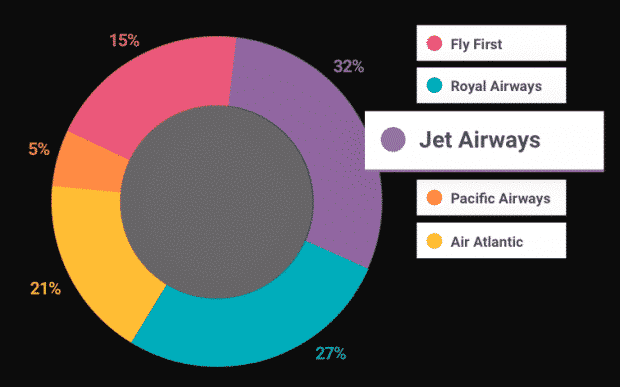
Brandwatch integrates with Hootsuite. Here’s a video showing how the two applications work together to provide key competitive analysis information.
Facebook Analytics
We talked earlier in this post about how to use Facebook Audience Insights to identify competitors. But Facebook offers another analytics tool that allows you to keep track of several of your competitors.
It’s called Pages to Watch. To access it, click Insights from your Facebook Page, then scroll down to the bottom. Once you add your competitors’ pages, you’ll be able to see their numbers for Page likes, follower growth, number of posts, and engagement rate at a glance.
To learn more about this tool, check out our post on how to use Facebook Analytics.
Social media competitive analysis template
You could create your own spreadsheet to keep track of all the information you gather during your social media competitive analysis.
But if you’d rather get straight to work collecting data and putting it to use, download our free social media competitive analysis template and just start plugging in the information you collect. There’s a tab for your SWOT analysis, too.
Bonus: Get a free, customizable competitive analysis template to easily size up the competition and identify opportunities for your brand to pull ahead.
Use Hootsuite to crush the competition on social media. From a single dashboard you can manage all your profiles, track competitors and relevant conversations, improve performance, and much more. Try it free today.
The post How to Conduct a Social Media Competitive Analysis (Free Template) appeared first on Hootsuite Social Media Management.
Contributer : Hootsuite Social Media Management https://ift.tt/2fy32ft
 Reviewed by mimisabreena
on
Thursday, February 06, 2020
Rating:
Reviewed by mimisabreena
on
Thursday, February 06, 2020
Rating:













No comments:
Post a Comment